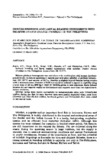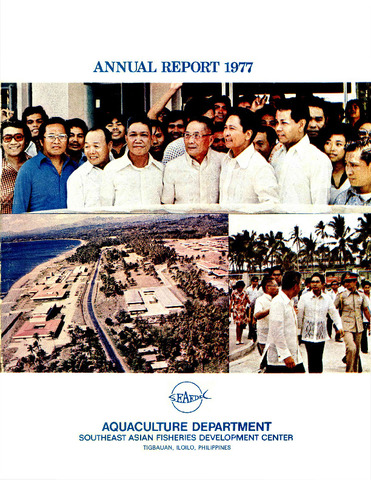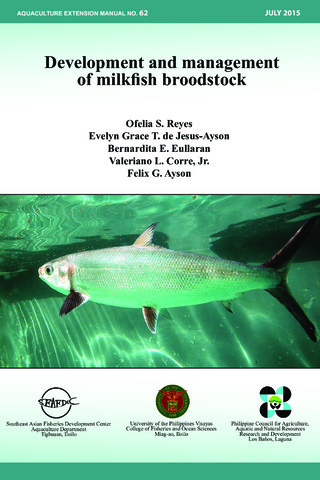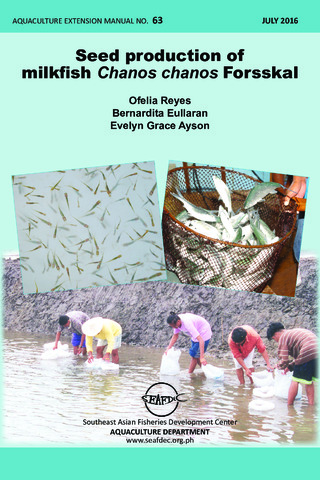Induced breeding and larval rearing experiments with milkfish Chanos chanos (Forskal) in the Philippines

閲覧/開く
Request this document日付
1984著者
Page views
119Metadata
アイテムの詳細レコードを表示するCited times in Scopus
Share
抄録
Salmon pituitary homogenate was used alone or in combination with human chorionic gonadotropin, to induce spawing in captive and wild adult milkfish at ambient temperature (26–30°C) and salinity of 34%.. Healthy or slightly injured females having oocytes with a minimum mean diameter of 0.66 mm could be induced to spawn in captivity using a total dose of 20 mg SPH/kg + 3000 IU HCG/kg given in two injections. Badly injured females did not respond readily to the hormone and required more than two injections to induce ovulation.
Milkfish larvae were reared successfully to metamorphosis using only Chlorella-fed rotifers during the first 10 days. Survival rates were greatly improved when, aside from Chlorella and Chlorella-fed rotifers, Isochrysis galbana and Tetraselmis chuii were added to the rearing tanks.
Suggested Citation
Juario, J. V., Duray, M. N., Duray, V. M., Nacario, J. F., & Almendras, J. M. E. (1984). Induced breeding and larval rearing experiments with milkfish Chanos chanos (Forskal) in the Philippines. Aquaculture , 36(1-2), 61-70. https://doi.org/10.1016/0044-8486(84)90054-1
Taxonomic term
Collections
- AQD Journal Articles [1215]
Related items
Showing items related by title, author, creator and subject.
-
Annual report 1977
Southeast Asian Fisheries Development Center, Aquaculture Department (Aquaculture Department, Southeast Asian Fisheries Development Center, 1978) -
Development and management of milkfish broodstock
Reyes, Ofelia S.; de Jesus-Ayson, Evelyn Grace T.; Eullaran, Bernadita E.; Corre Jr., Valeriano L.; Ayson, Felix G. (Aquaculture Department, Southeast Asian Fisheries Development Center, 2015)The manual provides developed and refined techniques for collection and transport of spawned eggs and larvae, as well as larval rearing. It also describes the necessary facilities for maintaining milkfish broodstock. Guidelines ... -
Seed production of milkfish Chanos chanos Forsskal
Reyes, Ofelia; Eullaran, Bernadita; Ayson, Evelyn Grace (Aquaculture Department, Southeast Asian Fisheries Development Center, 2016)A 26-page manual describing the site selection, hatchery design, spawning, larval rearing, natural food production, and economic analysis for milkfish.





